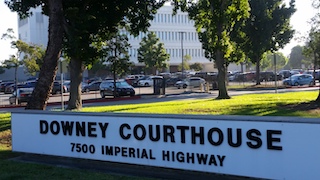The one-person showup is intended to allow identification of the suspect while the memory of the victim or witness is fresh and is rationalized by police as a way to exonerate persons detained near the crime scene.
(1987) 196 Cal.App.3d 1041, 1049, 242 Cal.Rptr. 386.
It is important to understand from the outset that there is no right to counsel at a one-person showup held promptly between an apprehended suspect and witness(es) or victim(s) at or near the scene of the crime.
(1979) 91 Cal.App.3d 960, 971, 155 Cal.Rptr. 11.
However, that does not mean that the officer has unbridled discretion to apprehend anyone and bring him or her to the witness or suspect for identification.
There are three broad areas for contesting the showup.
First, the officer must reasonably believe that there was some criminal conduct taking place, happened or was about to take place and that the suspect was connected with that activity. The officer’s suspicions must be objectively reasonable.
Rodriguez, supra, at 1047.
Second, to then transport that suspect to the crime scene, the officer must have probable cause to believe the suspect is responsible for the criminal activity at issue.
People v. Harris (1975) 15 Cal.3d 384, 389, 124 Cal.Rptr. 536. “Transportation detention” impermissibly violates the detainee’s constitutional rights because “ordinarily there exist less intrusive and more reasonable alternatives to pre-arrest transportation.”
However, there are situations were transportation is reasonable. See, e.g.,
In re Carlos M. (1990) 220 Cal.App.3d 372, 383, 269 Cal.Rptr. 447 (transportation of two rape suspects to hospital where victim was being treated was reasonable in circumstances and identification was not impermissibly suggestive);
People v. Courtney (1970) 11 Cal.App.3d 1185, 1191, 90 Cal.Rptr. 370 (officer transported suspect to station for investigation because of hostile crowd).
Third, the showup cannot be impermissibly suggestive. The burden of proof on this issue is on defendant to show that under the “totality of the circumstances” it was.
Stovall v. Denno (1967) 388 U.S. 293, 302, 18 L. Ed. 2d 1199, 1206, 87 S. Ct. 1967. Defendant must show that the showup gave rise to a “very substantial likelihood of irreparable misidentification.”
Simmons v. U.S. (1968) 390 U.S. 377, 384, 19 L.Ed. 2d 1247, 1253, 88 S.Ct. 967.
There are five basic issues to consider in determining if a showup was impermissibly suggestive. They are: 1) the witness’ opportunity to observe the suspect at the time of the crime; 2) the witness’ degree of attention; 3) the accuracy of the witness’ description of the suspect before the showup; 4) the certainty shown by the witness at the confrontation or showup; and 5) the length of time between the crime and the showup or confrontation.
If a showup is held even twenty hours after the crime, it may be considered “prompt” based on the circumstances.
People v. Nash (1982) 129 Cal.App.3d 513, 517, 181 Cal.Rptr 145. However, a showup many months after a robbery would not be fair under the circumstances.
People v. Bisogni (1971) 4 Cal.3d 582, 586, 94 Cal.Rptr. 164.
For more information about identification issues, please click on the following articles:
- Police Detention Is Illegal When Based on Only One’s Resemblance to a Suspect
- Mistaken Identity? What Can One Do? Motion for a Lineup?
- Store Security Video Evidence, without Any In-Person Identification, Can Be Used to Convict You
Contact us.  Downey Courthouse
Downey Courthouse